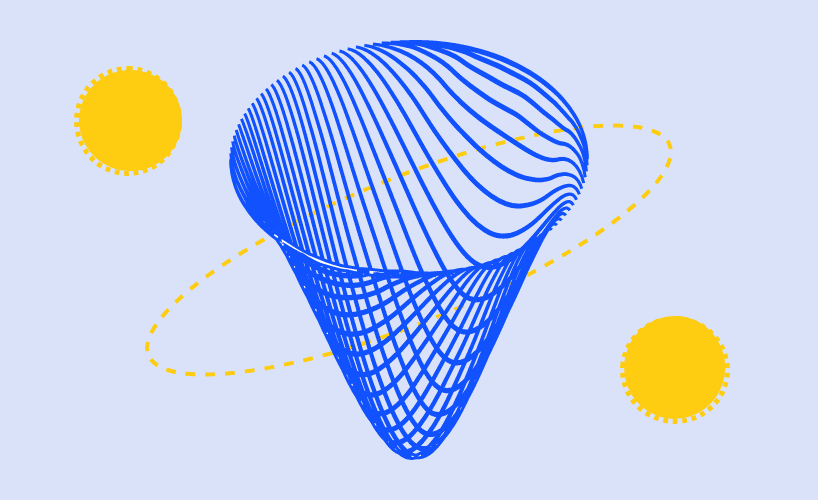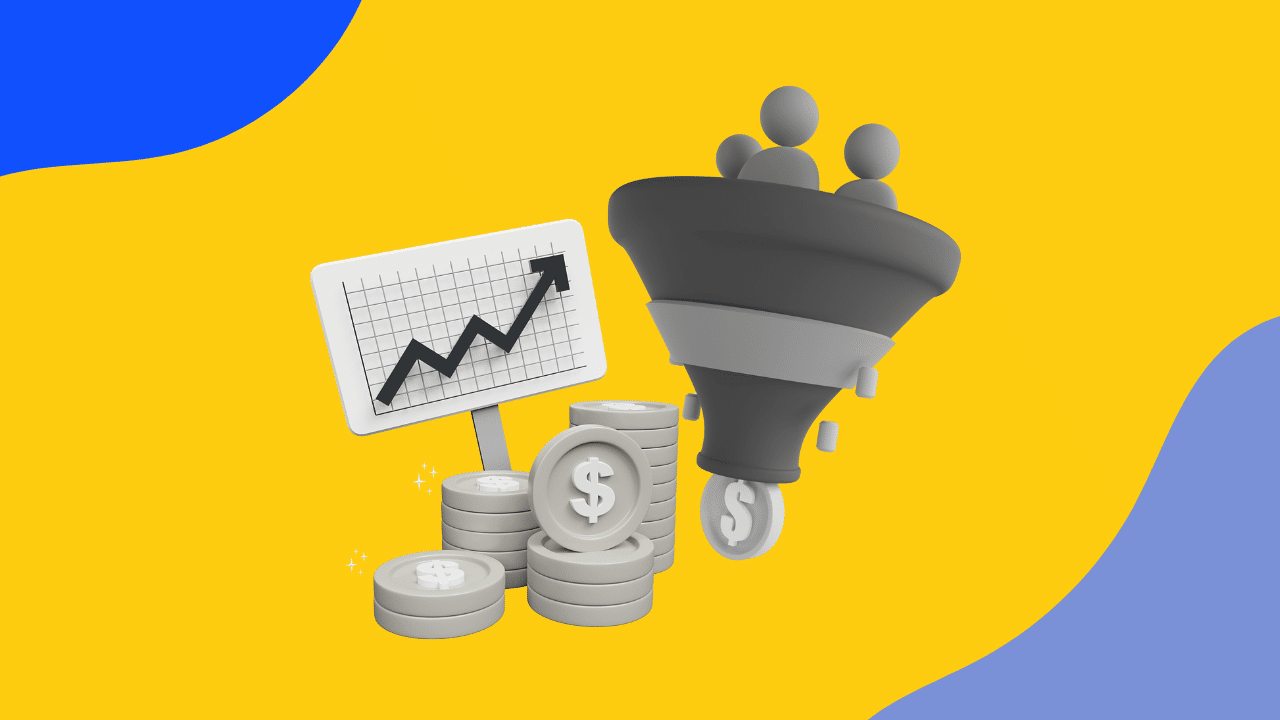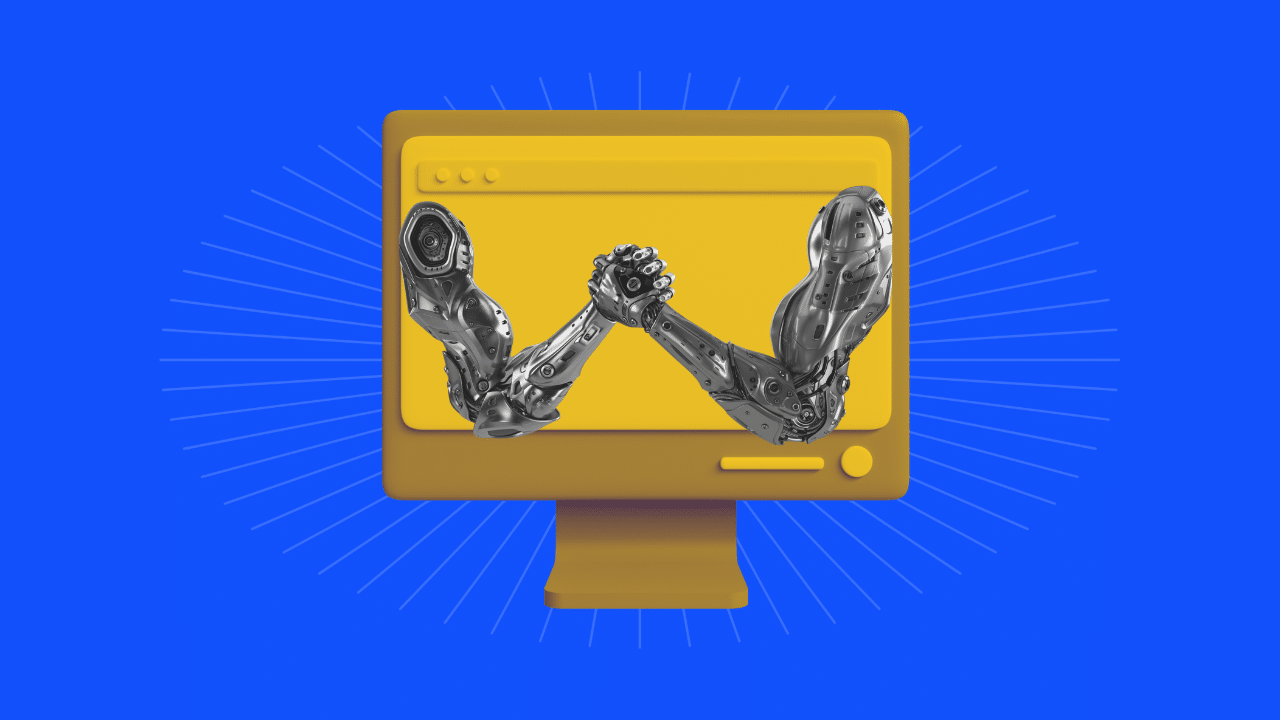
- Digital Customer Experience, Customer Experience, Content Marketing
Recent articles
our mailing list
Maximising Business Success with a Strategic Marketing Funnel

Welcome to the world of marketing funnels, where every business dream becomes a reality!
In simple terms, a marketing funnel is a visual representation of the different stages a customer goes through before making a purchase.
It starts with awareness and ends with the customer taking action.
Think of it as a journey that guides your customer from stranger to loyal customer.
So, what’s the big deal about a marketing funnel, you may ask?
Buckle up and get ready to learn why understanding the marketing funnel is crucial for your business success!
Why Is The Marketing Funnel So Important?
Picture this: You are on a long road trip with no GPS or map to guide you to your destination.
Sounds like a nightmare, right?
Similarly, running a business without a marketing funnel can be a real disaster.
A marketing funnel helps you to navigate the complex terrain of customer acquisition and retention, leading to increased sales and revenue.
It gives you a clear understanding of your customer’s journey, allowing you to create targeted marketing campaigns that resonate with your audience.
In short, understanding the marketing funnel is vital to the growth and success of your business.
So let’s dive in and explore the exciting world of marketing funnels!
A Breakdown Of The Marketing Funnel
The Different Stages
Awareness
This first top-of-funnel stage (TOFU) is where you introduce your brand to potential customers.
Imagine you’re at a party, and you spot someone across the room that catches your eye. You don’t know them yet, but you’re intrigued.
That’s the Awareness stage of the marketing funnel!
Here, your goal is to capture your potential customer’s attention and make them aware of your brand.
You can do this through various tactics, such as:
- Social media marketing:
Utilising platforms like Instagram, Facebook, and Twitter to reach a broader audience and build a community around your brand.
- Search engine optimisation (SEO):
Improving your website’s search engine rankings to increase visibility and reach a larger audience.
- Content marketing:
Creating valuable and informative content that attracts potential customers to your brand.
Your mission is to entertain and educate, while introducing your product as the ultimate solution to their problem.
Make sure they know that you’re the ultimate go-to source for all their needs.
In this stage, you’re speaking to a wide audience that has absolutely no clue about your brand, so keep it snappy, concise, and catchy!
Use your best USPs to state the obvious and make sure your message hits home.
Don’t expect conversions to pour in just yet – this is just the beginning of the journey.
But with some convincing, you can get these curious cats to become loyal fans of your brand!
Consideration
Now here is where the real magic happens!
You’ve made eye contact with the person you spotted at the party, and you’re starting to get to know each other.
That’s the Consideration stage of the marketing funnel!
Here, your goal is to build trust, nurture the relationship and show the audience why they can’t live without your product or service.
You can do this by providing valuable information, such as:
- Lead magnets:
Offering something of value, such as a free e-book or discount code, in exchange for a customer’s email address.
Read up on crafting killer lead magnets at our blog post.
- Remarketing:
By displaying targeted ads to customers who have previously interacted with your brand, you can keep your brand top of mind and encourage them to take the next step in the funnel.
- Email marketing:
By sending informative and personalised emails, you can build a relationship with your audience and establish your brand as a trustworthy source of information.
Conversion
You and the person you met at the party have hit it off, and you’re ready to take the next step.
That’s the Conversion stage of the marketing funnel!
Here, your goal is to turn your potential customer into an actual paying customer.
Nudge them with irresistible offers, social proof, scarcity, or anything that can create urgency and persuade them to take action.
Think personalised content like free trials or demos and don’t forget customer testimonials or reviews to help build confidence in your product or service!
Loyalty
Congratulations, you’ve successfully wooed your potential customer and turned them into a loyal fan!
That’s the Loyalty stage of the marketing funnel!
Here, your goal is to keep them coming back for more, encouraging repeat purchases, and turning them into brand advocates.
Don’t forget – just because someone has made a purchase from you, that doesn’t mean you can forget about them!
Keep in touch through things like newsletters or exclusive promotions, and continue to provide great customer service to keep them coming back for more.
Think of it like a happy marriage – you want to keep the spark alive and nurture the relationship.
Keep providing that exceptional service!
Why Does the Marketing Funnel Matter?
The Benefits Of Having A Well-Defined Marketing Funnel
Having a well-defined marketing funnel is like having a map to guide you on a road trip.
You wouldn’t just start driving aimlessly and hope to arrive at your destination, would you?
That’s why a marketing funnel is essential – it helps you to stay on track and reach your marketing goals.
With a well-defined funnel, you can create a marketing plan that’s tailored to your audience, communicates your value proposition effectively, and increases your chances of success.
Understanding Customer Behaviour And Needs
We all know that understanding your customer’s behaviour and needs is crucial in today’s market.
You can’t just create a product or service and hope people will buy it.
You need to understand their needs, their pain points, and what motivates them to make a purchase.
That’s where the marketing funnel comes in.
It allows you to identify where your customers are in their journey, what questions they have, and what content they need to move to the next stage.
By tailoring your marketing messages to each stage of the funnel, you increase your chances of converting them into paying customers.
If you want a deeper dive into getting into your customers shoes head to our blog post where we explain all the tips and tricks.
Streamlining The Sales Process
Streamlining the sales process is essential for any business, big or small.
Nobody wants to spend hours navigating a complicated checkout process or filling out endless forms.
That’s why the marketing funnel is your secret weapon to creating a seamless and efficient sales process.
By identifying areas of your funnel that may be slowing down the customer’s journey, such as long checkout processes or confusing product descriptions, you can make changes that improve the customer’s experience and increase the likelihood of conversion.
Maximising ROI
ROI is the name of the game for any business.
You want to make sure that your marketing efforts are bringing in a return on investment, whether it’s through increased sales, leads, or brand awareness.
That’s why the marketing funnel matters – it allows you to measure your ROI and optimise your marketing campaigns accordingly.
By analysing your conversion rates at each stage of the funnel, you can identify which areas are performing well and which ones need improvement.
At SDM we suggest looking at your funnel in Google Analytics or a similar tool. Ask yourself:
- Where are people dropping off?
- What do I need to optimise to get more people from awareness all the way down to loyalty?
Finding these drop off points with the marketing funnel helps you to allocate your resources effectively and maximise your ROI.
Practical Ways To Create Content for Each Funnel Stage
Let’s explore some ways you can optimise your marketing funnel and boost your chances of success!
Creating Compelling Top-of-the-Funnel Content
Creating compelling top-of-the-funnel content is all about attracting your target audience and providing them with valuable information that helps solve their problems.
One of the most effective ways to grab their attention is by being authentic, honest, and providing solutions to their problems at no cost to them.
By focusing on the main issue or problem, answering related questions, and providing relevant sources, you can build intrigue for your brand or product without being overly salesy.
It’s crucial to avoid coming across as too promotional and instead focus on educating and providing value to your audience.
For example, in a post like “How to Become a Better Writer: 14 Expert Tips,” you can position yourself as an expert while mentioning your product or service in a way that correlates with the topic or issue.
By doing so, you’ll plant the seed that your brand is knowledgeable, and your product is worth considering.
Want more examples? Here you go:
- Blog posts:
Writing blog posts that address common issues and questions related to your industry is a great way to educate your audience and build brand awareness.
For instance, if you sell skincare products, you can write blog posts about the benefits of using natural ingredients in skincare, how to identify your skin type, and other related topics.
- Infographics:
Infographics are visual representations of information and data that are easy to understand and share.
They are great for explaining complex concepts and statistics in a visually appealing way.
For example, if you’re in the fitness industry, you can create an infographic about the benefits of different types of exercises, such as yoga, strength training, and cardio.
- E-books:
E-books are longer pieces of content that provide in-depth information on a particular topic.
They are often used as lead magnets to capture email addresses and build your email list.
For instance, if you’re in the business coaching industry, you can create an e-book about how to start a successful coaching business.
- Videos:
Videos are a great way to grab your audience’s attention and convey your message in an engaging way.
You can create explainer videos, product demos, or even funny skits related to your industry.
For example, if you sell kitchen appliances, you can create videos about how to cook healthy meals using your products.
Keep Drawing Them in With Middle-of-the-Funnel Content
Now that you’ve got potential customers hooked with your top-of-the-funnel content, it’s time to really reel them in with some juicy middle-of-the-funnel content.
This is where you can get a little more intimate and offer something for free – yes, you heard that right, FREE!
People love free stuff, especially if it’s useful and valuable.
At this stage, it’s all about establishing trust and building a relationship with your audience.
Show them what makes your brand unique and how your product or service can solve their problems.
Don’t be afraid to get creative and offer different types of content:
- White papers
- Guides
- Case studies
- Or even a quiz
The goal is to keep them engaged and interested.
For instance, a fashion brand could offer a free styling guide that showcases their latest collection and offers tips on how to wear the pieces.
Or a fitness company might offer a free trial workout video that demonstrates the effectiveness of their program.
Whatever you choose, make sure it’s valuable and showcases your brand’s expertise.
Remember, the middle-of-the-funnel content is all about building trust and establishing your brand as a go-to resource.
So go ahead and offer up some freebies, and keep your audience hungry for more!
Strategically Converting with Bottom-of-the-Funnel Content
Alright, let’s break down the final stage of your funnel: the bottom of the funnel.
At this point, your prospect pool has significantly shrunk, but don’t worry, you’re in the home stretch now!
It’s time to pull out all the stops to convince your potential customers that your product is the one they need.
How can you do that? By giving them even more hands-on experience and reviews, of course!
People trust reviews, and customer-generated content will help you attract even more customers.
You can use calls-to-action, 14-day trials, product comparisons, demos, consultations, and genuine testimonials from happy clients.
It’s time to really brag about just how amazing your product is, and a product demo is a fantastic way to do that.
Another example of bottom-of-the-funnel content is to send follow-up emails to customers who attended a webinar and invite them to demo your product or service for free.
This will give them an exclusive behind-the-scenes look at everything your product or service can do.
And at the end of it all, you can offer a 14-day free trial or a heavily discounted first year of services to really motivate them to buy.
Remember, at this stage, you want to make it as easy as possible for them to say yes to your product.
Monitor And Measure Success
Measuring your success at each stage of the funnel is like having a map and a compass that tells you where you are and where you need to go.
Think of it as a treasure hunt game, where you need to collect different clues to uncover the hidden treasure.
In the same way, each stage of the funnel has different metrics that act as clues to help you measure the success of your marketing strategy.
These metrics tell you how your customers are engaging with your content and how close they are to becoming loyal customers.
So, let’s dive in.
Key TOFU Metrics
- Website traffic: how many people are visiting your site?
- Unique visitors: how many individual people are visiting your site?
- Time spent on site: are people spending enough time on your site?
- Bounce rate: are people leaving your site immediately?
- Social media engagement: are people engaging with your content on social media?
- Email sign-ups: how many people are subscribing to your newsletter or other email communications?
Key MOFU Metrics
- Click-through rates: how many people are clicking on links to your content?
- Time on page: are people spending enough time on your content?
- Conversion rates: how many people are taking the next step towards becoming a customer?
- Form submissions: how many people are filling out forms to get more information?
- Video views: how many people are watching your videos?
- Content downloads: how many people are downloading your content?
Key BOFU Metrics
- Sales revenue: how much money are you bringing in?
- Conversion rates: how many people are converting into customers?
- Average order value: how much are customers spending?
- Customer lifetime value: how much is each customer worth to your business over time?
- Customer retention rate: how many customers are coming back?
- Return on investment (ROI): are you making a profit on your marketing efforts?
Getting The Most Out Of Your Funnel
Oh boy, we’ve covered a lot in this post! Let’s do a quick recap of everything we’ve learned about the importance of a marketing funnel:
- A marketing funnel is crucial for guiding potential customers through the buying journey.
- It helps to identify where prospects are in the buying journey, and tailor your messaging to their specific needs.
- By segmenting your leads into different stages of the funnel, you can create content that is highly relevant and targeted.
- With a well-optimised funnel, you can increase conversions, boost revenue, and create more loyal customers.
Maximising Your Business Success
Congratulations, you’ve made it to the end of this post! We hope you’re feeling inspired and ready to implement an optimised marketing funnel in your business. Here are a few final thoughts to keep in mind:
- Don’t be afraid to experiment and iterate.
- Your funnel won’t be perfect right off the bat, but by testing and tweaking your approach, you’ll find what works best for your business.
- Keep a close eye on your metrics. Tracking your success at each stage of the funnel is critical for identifying areas that need improvement.
- And remember, a marketing funnel is a marathon, not a sprint. It takes time and effort to build a funnel that really works, but the rewards are well worth it. So get started today and watch your business soar!
If you’re unsure where to start then feel free to tap into our expertise here at Sydney Digital Marketing Agency™
.
We’re well versed in crafting strategy in line with each stage of the marketing funnel so reach out to the team. Contact us today!







